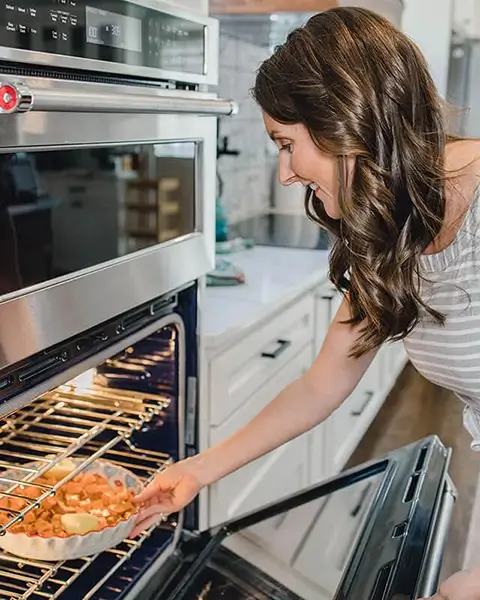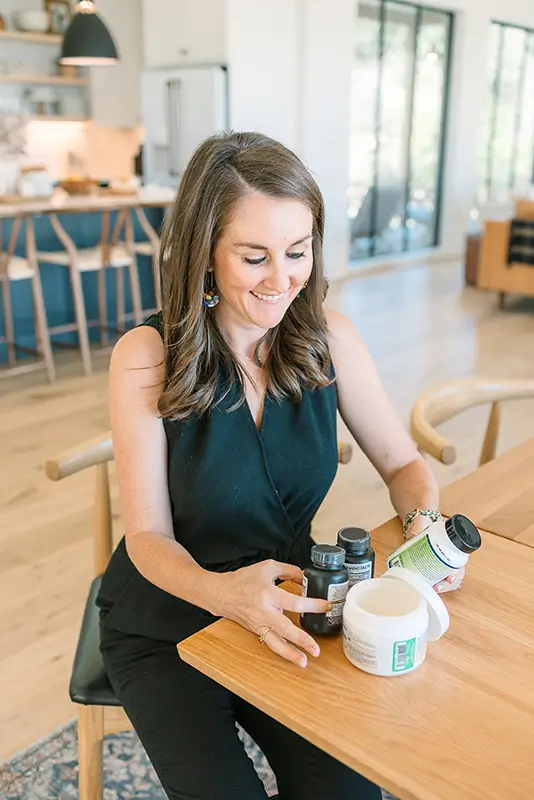If you’ve followed a SIBO protocol and felt hopeful only to still feel bloated, tired, or scared to eat more than five foods, you’re not the only one. So many women I talk to feel like they’ve done “everything right” with SIBO treatment but still don’t feel well. The problem isn’t you. The problem is the plan. Most SIBO diets are missing the most important phase: rebuilding. Here’s what your gut actually needs after SIBO treatment and how to safely bring foods back in without ending up right back where you started.
You might be here because you’re tired of living on five foods or wondering why you still feel bloated after “finishing” SIBO treatment. And if that’s you, make sure you didn’t miss the first two parts of this series. Part 1 breaks down what SIBO actually is (and what it’s not), and Part 2 covers the problems with testing and why symptoms don’t always match your results. If you haven’t tuned into those yet, definitely go back and listen as they’ll give this next step way more context.
Killing SIBO Doesn’t Mean You’re Healed
Finishing a protocol can feel like crossing a finish line, but for most people, it’s just the beginning. Especially if you were put on antimicrobials or antibiotics without a plan to rebuild afterward. We see this all the time: clients with totally wiped-out beneficial bacteria, thin gut linings, and sluggish motility. It’s no wonder you’re still bloated or afraid to eat more than five foods. That overgrowth may be gone, but your gut still doesn’t feel safe.
Your Gut Lining Needs Attention
After a harsh protocol, your gut lining can feel like a house that’s been through a storm. The leaks might be patched, but the foundation is still weak. Think inflammation, leaky gut, low stomach acid, and poor absorption. That’s why you might feel foggy, tired, or more reactive than ever. This is when things like glutamine, butyrate, immunoglobulins, and even gentle foods like bone broth and aloe can help repair the damage and rebuild the terrain.
You Can’t Starve the Good Guys Forever
Diets that remove fiber and fermentable foods can help in the short term with symptom relief, but they also starve the exact bacteria you need to prevent SIBO from coming back. Bifidobacteria and Akkermansia thrive on polyphenols and resistant starch. Without them, your gut becomes fragile. Instead of fearing these foods, we help clients slowly add them back in to rebuild a strong and diverse microbiome.
Digestion Starts Way Before the Food Hits Your Stomach
If your nervous system is stuck in fight-or-flight, your digestion won’t work. It’s not just about what you eat, it’s how you’re eating. Stomach acid, bile, enzymes, and motility all depend on your body being calm and regulated. Eating in a rush, skipping meals, grazing all day? These habits can bring symptoms back even after a “successful” treatment. Rebuilding digestion from the top down is just as important as killing overgrowth.
How to Add Foods Back in Without the Fear
Reintroduction is where real healing happens, but it’s also where most people freeze. You’ve been through restrictive protocols, you’ve finally gotten some relief, and now the thought of adding a new food feels terrifying. What if it sets you back? What if it triggers a flare? This is where fear can keep you stuck longer than necessary. But the truth is, staying on five “safe” foods isn’t the goal. Your gut actually gets stronger with variety.
Start with gentle, cooked, low-reactivity foods like zucchini, squash, carrots, or sprouted oats. These tend to be easier on digestion and less likely to trigger major symptoms. From there, move toward colorful, polyphenol-rich options like blueberries, pomegranate seeds, cocoa powder, or olives. Then you can start experimenting with resistant starch from cooked and cooled potatoes or rice. These feed your beneficial bacteria and help rebuild butyrate production, which supports a strong, resilient gut lining.
You don’t have to add everything at once. One new food every 48 hours is plenty. Keep everything else consistent so you can actually pinpoint what your body is telling you. And remember: a little gas, pressure, or bloating doesn’t mean you messed up. It might actually be a good sign that your microbiome is shifting and waking back up. It’s like muscle soreness after a new workout. Uncomfortable? Sure. But often, it means something is changing in the right direction.
Lifestyle Habits That Help SIBO Stay Gone
Supplements can be powerful, but they won’t override a body that’s constantly under stress, underfed, or underslept. You can take all the herbs, probiotics, and binders you want, but if your basic rhythms are off, your gut is going to stay stuck. This is one of the first things we address with clients, not because it’s trendy, but because it actually works.
Morning sunlight is one of the simplest ways to reset your circadian rhythm. Just ten minutes outside within 30 minutes of waking helps regulate cortisol, support thyroid function, and even improve gut motility. It sounds almost too easy, but I’ve seen it make a massive difference, especially for clients who wake up constipated or feel wired and tired all day.
Short walks after meals can be another game-changer. You don’t need to power walk around the neighborhood, just a gentle stroll helps stimulate the vagus nerve, improve digestion, and keep things moving. It’s like built-in motility support, and you don’t need a supplement bottle to access it.
And don’t overlook food itself. Eating enough, especially enough protein, gives your gut the raw materials it needs to heal. If you’re skipping meals, grazing all day, or constantly under-eating, your body doesn’t feel safe enough to prioritize digestion. When you start nourishing consistently and intentionally, everything starts to shift: energy, digestion, mood, even how your body handles stress.
Healing isn’t just about what you take. It’s about how you live. Small daily rhythms like these might seem basic, but they’re the foundation for keeping your gut strong and making sure your symptoms don’t keep coming back.
You Don’t Need Another Protocol. You Need a Plan to Rebuild
If you feel like you’re stuck in the SIBO loop: kill, restrict, repeat, it doesn’t mean your treatment failed. It usually means the plan stopped too early. You may have cleared the overgrowth, but if no one helped you restore motility, rebuild your gut lining, or bring back microbial diversity, of course you’re still symptomatic. The SIBO diet may have given you temporary relief, but symptom relief is not the same as gut resilience.
This is exactly why we spend so much time with clients focusing on the after. On repairing the gut lining. On reintroducing foods in a way that doesn’t create fear. On supporting motility, digestion, and the nervous system. Because that’s where the transformation actually happens, not during the kill phase, but after it.
If this is resonating and you haven’t already, go back and check out Part 1 where I explain what SIBO actually is (and what it’s not), and Part 2 where I break down what testing gets wrong and why your results may not reflect how you feel. Those two episodes are essential to understanding why your symptoms are still hanging around.
You deserve more than a short-term fix or a rotating list of five safe foods.
If you’re ready to rebuild your gut in a way that actually lasts, our gutTogether® program is here to walk with you every step of the way. You don’t need another SIBO protocol, you need a personalized plan that helps your gut finally feel safe again. Apply for 1:1 support here.








